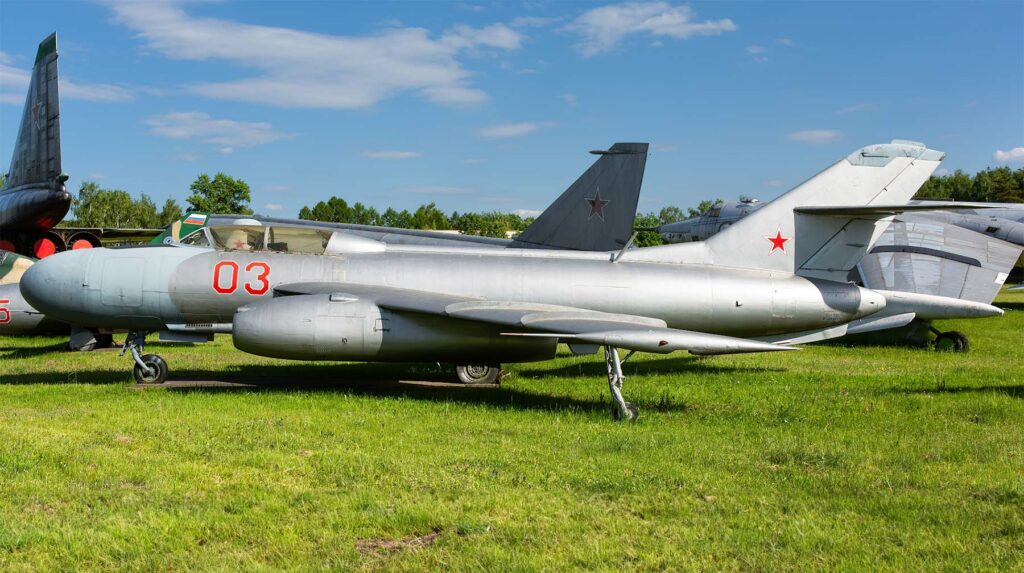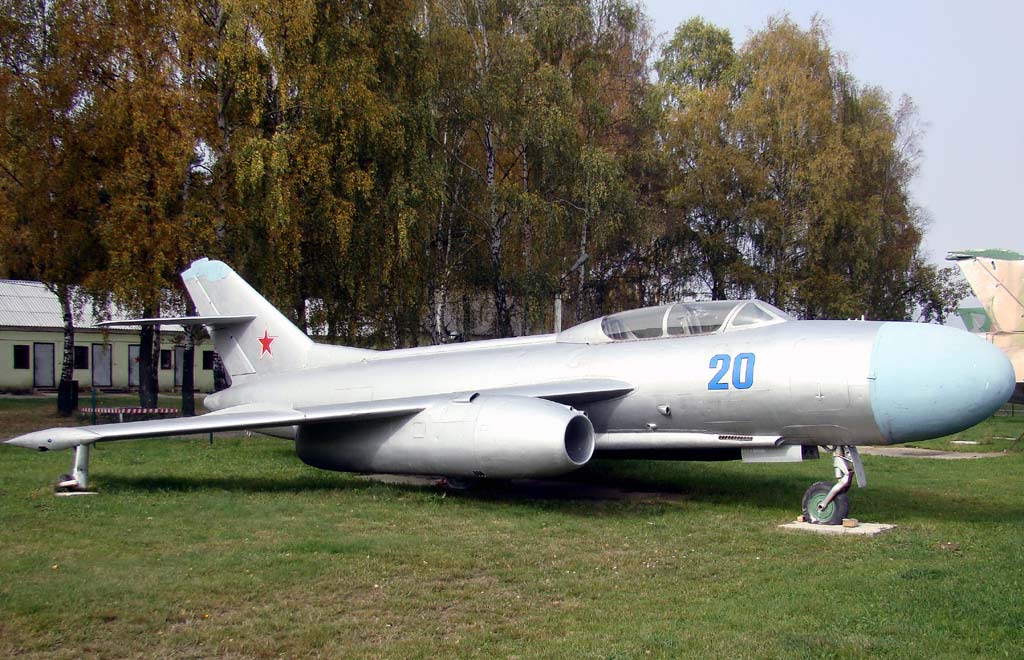The Yak-25 was a Soviet interceptor and reconnaissance aircraft, characterized by its swept wings and dual jet engines.
The Yakovlev Yak-25, a prominent figure in the Soviet Union’s Cold War aviation arsenal, was a twin-engine, high-altitude interceptor and reconnaissance aircraft. Introduced in the mid-1950s, it played a pivotal role in countering potential threats from Western bombers. The Yak-25 was distinguished by its sleek design, swept wings, and significant range and altitude capabilities. It served primarily in the air defense role, with its variants being used for reconnaissance, signal intelligence, and training purposes. The aircraft marked a significant step in the Soviet Union’s jet aviation, balancing speed, altitude, and operational range, and remained in service until the late 1960s, reflecting the rapid pace of military aviation development during the Cold War.
The Yakovlev Yak-25 was a critical component of the Soviet Union’s military aviation during the Cold War, serving as a high-altitude interceptor and reconnaissance aircraft.

History of the Development of the Yakovlev Yak-25
In the early years of the Cold War, the Soviet Union recognized the need for a capable high-altitude interceptor to counter the threat posed by Western strategic bombers. This requirement led to the development of the Yakovlev Yak-25, a project initiated by the Yakovlev design bureau.
The design of the Yak-25 was driven by the need for a fast, high-flying aircraft capable of intercepting enemy bombers at high altitudes. The program was launched in the early 1950s, reflecting the Soviet Union’s focus on bolstering its air defenses in the face of growing tensions with the West.
The Yak-25 first flew on June 19, 1952, marking a significant advancement in Soviet interceptor technology. It was designated by NATO with the nickname “Flashlight,” reflecting its distinctive appearance and role.
Design of the Yakovlev Yak-25
The Yak-25 featured a sleek airframe with swept wings and tail surfaces, designed for optimal performance at high altitudes. It was powered by two Mikulin AM-5 turbojet engines, which were positioned at the wing roots, a design choice that reduced drag and improved engine maintenance.
The aircraft had a length of approximately 51 feet (15.5 meters) and a wingspan of around 51 feet (15.5 meters). The use of lightweight materials and an efficient aerodynamic design contributed to its high-altitude performance.
One of the main advantages of the Yak-25’s design was its long-range radar, which allowed for effective detection and interception of enemy aircraft. However, the aircraft had limitations in terms of speed and maneuverability compared to some Western counterparts.
Performance of the Yakovlev Yak-25
The Yak-25’s twin engines provided a total thrust that enabled a top speed of around 685 mph (1,100 km/h) and an operational ceiling of 47,900 feet (14,600 meters). The aircraft had a range of approximately 1,700 miles (2,735 kilometers), making it suitable for extended patrols and interception missions.
In comparison with Western interceptors like the American F-86 Sabre and the British English Electric Lightning, the Yak-25 was competitive in terms of altitude performance but generally slower and less agile.

Military Use and Combat of the Yakovlev Yak-25
The Yak-25 was equipped with air-to-air missiles and a radar-guided cannon, making it a formidable interceptor during its service years. It was primarily used for air defense, patrolling Soviet airspace and intercepting potential threats.
The aircraft saw extensive service in the Soviet Air Defense Forces but did not engage in major conflicts, as its primary role was deterrence and defense. The Yak-25’s reconnaissance variants played a crucial role in gathering intelligence along the borders of the Soviet Union.
The Yak-25 was not widely exported, remaining mostly within the Soviet sphere. It was eventually phased out in the late 1960s, replaced by more advanced interceptors like the MiG-21, which offered superior speed and agility.
The Yakovlev Yak-25 was a significant aircraft in the Soviet Union’s Cold War arsenal, playing a crucial role in air defense and reconnaissance. Its design and capabilities reflected the strategic priorities of the era and contributed to the advancement of Soviet military aviation technology. While it was eventually surpassed by more modern designs, the Yak-25’s legacy as a key player in the Cold War’s aerial chess game remains noteworthy.
Back to the Fighter Jet section.